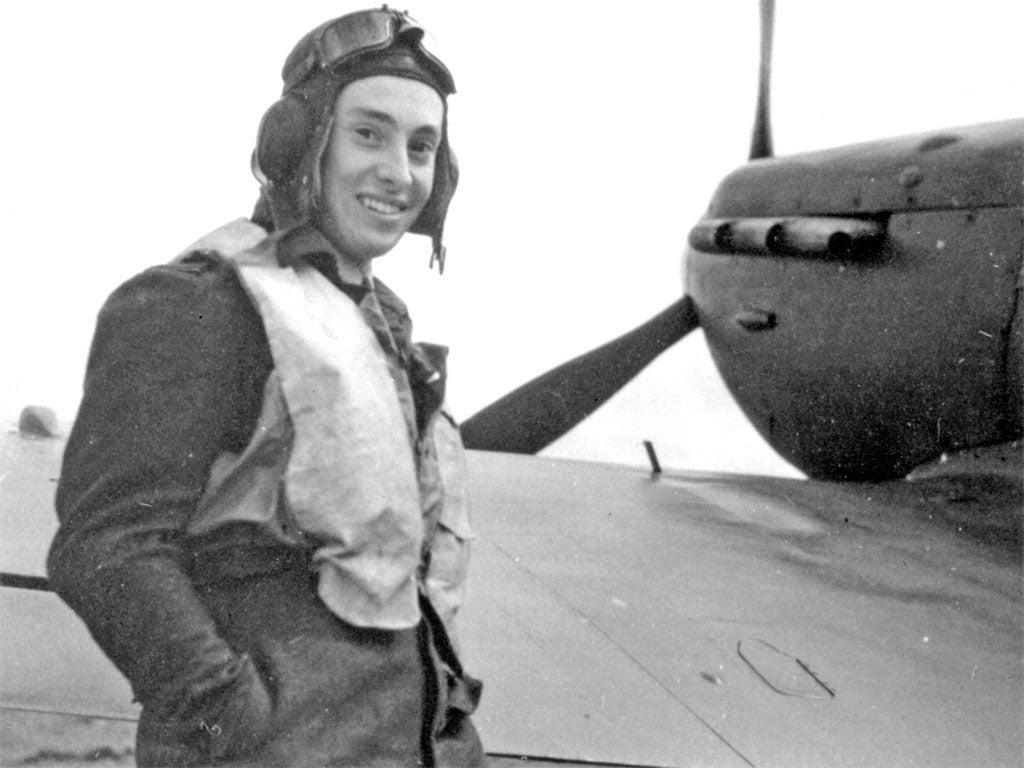Air Marshal: Sir Alfred Ball Daring photo-reconnaissance pilot in the Second World War

Alone, five miles up, in an unarmed, pale pastel-painted Spitfire, 22-year-old Flying Officer Freddie Ball proved himself a master of one of the RAF's most dangerous wartime duties, photo-reconnaissance over enemy-held territory in daylight. Taking pictures over Germany during the Second World War, Ball had only elapsed time, dead reckoning and a compass to get him home with the precious photographs after a six-hour sortie in an unpressurised, unheated cabin keeping to about 30,000 feet to avoid making a give-away condensation trail.
Operating the controls with hands in electrically-heated gloves that either burned or did not work, and wrapped in a cumbersome "Irving" suit against the cold (though the cameras were heated), Ball had no other option if spotted by the enemy than to turn away, putting the aircraft to her 365mph maximum speed, and hope to escape. Breathing "full-on" oxygen all through the sortie was uncomfortable – and no remedy against anoxia after two or three hours, when a deadly sense of well-being would take hold and his vision grow disturbed.
Nevertheless, the man who coaxed his Spitfire home after his Rolls-Royce Merlin engine failed over the Ruhr, and gained "unnecessary holes" when attacked over Tunis, named as "one of my worst frights" an encounter with a fellow British duck-egg blue-green camouflaged photo-reconnaissance plane flying in the opposite direction over Munich. They crossed 50 feet apart.
Of the Ruhr incident Ball said: "I found out that I could keep the engine going spasmodically by using the Ki-gas pump [for priming the engine]. I could not maintain height but at 150mph on a slightly downhill path I managed to reach Dunkirk at 2,000 feet. I thought I might just reach the English coast, but, pumping even harder and with no skin left on my hand, I crossed the English coast at 800 feet. I thought I would have to put down on a mudflat or beach but I actually reached Eastchurch – just – and got my wheels down and on to the ground intact."
Over Tunis, where Squadron Leader Ball commanded Photo-Reconnaissance Unit No 4 accompanying the Allied "Operation Torch" landings in 1942, he was attacked eight times at 24,000 feet by four FW 190s as he completed 45 minutes of Front Line photography. Front-Line mapping for the First Army on one occasion lost his nine-strong squadron four planes in three days.
The gregarious, always smiling Ball, who decades later, after having hit the height of being an Air Marshal, still sported his fighting airman's moustache, maintained: "It was the ideal job for a loner". One blessing, he said, of having no radio in the first three years of wartime flying was that the PR pilot could not hear the disconcerting whine of enemy radar hunting for him.
His pupils from Dyce, Aberdeen, where he did a stint as Chief Flying Instructor, joked that they were "on the Ball" – a pre-requisite for PR fliers if they were to live. Not only did lives depend on keeping a sharp look-out when airborne – they also had to remember simple things such as switching their oxygen on before take-off. Ball remembered several fatal accidents caused by men forgetting to do so.
Later in the war he took pictures flying the laminated wooden Mosquito, introduced from 1942, which allowed space for a navigator and had its camera positioned in the nose. Ball defended the Spitfire, which for its wing-mounted cameras to work had to be turned up on its side, explaining: "Once you had the knack you could cover pin-points just as well as Mosquitos".
Alfred Henry Wynne Ball was educated at Campbell College, Belfast and RAF College Cranwell. He was promoted to Wing Commander in September 1944, and took No 540 Squadron flying Mosquito 16s and 32s to support the Allied advance. December 1945 brought a posting to Egypt to command No 680 PR Squadron, and in 1946 he moved to staff AHQ East Africa.
He became Group Captain, Operations, British Joint Services Mission in Washington in 1959, and as Air Commodore was Officer in Charge of Administration in Aden in 1965. He was the RAF's Director of Operations from 1967 and assistant Chief of Staff at the Supreme Headquarters, Allied Powers Europe (SHAPE) in Belgium in 1968. He returned to the Ministry of Defence as the RAF's Director General of Organisation and was the UK's representative at the short-lived Central Treaty Organisation in Ankara that existed to promote mutual protection between Turkey, Iran, Iraq, Pakistan and the UK.
He was knighted in 1976 and the following year became Deputy Commander of RAF Strike Command, based at High Wycombe, formed from the old Bomber, Fighter and Coastal Commands. He retired in 1979 and became Military Affairs Adviser to ICL (International Computers Ltd), until 1983.
Anne Keleny
Alfred Henry Wynne Ball, RAF pilot: born Rawalpindi 18 January 1921; commanded Squadrons No 682, 542, 540 and 13; DFC 1942, DSO 1943, KCB 1976; married 1942 Nan MacDonald (died 2006; three sons, one daughter); died Henley-on-Thames 25 January 2012.
Join our commenting forum
Join thought-provoking conversations, follow other Independent readers and see their replies
Comments